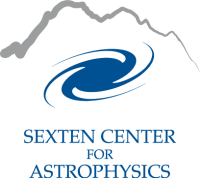›Formation and Evolution of the Galactic Bulge
This workshop will focus on the recent data which suggest a rather complex picture for the formation of the Galactic Bulge. In particular, what emerges from the recent data is that the Milky Way Bulge could have both the characteristics of a classical bulge and of a pseudo-bulge. In other words, it has been suggested the existence of two main populations, one with the characteristics of an old bulge, i.e. with large [alpha/Fe] ratios and kinematics of an old spheroid, and, another younger more metal rich populaton related to the bar, i.e. with bar-like kinematics and evidence of cylindrical rotation. Moreover, searches for abundance gradients in the Galactic Bulge have also started and the possibility of a vertical gradient has been suggested.
On the other hand, from a theoretical point of view, the abundance ratios are very powerful tools to understand the history of star formation of the different stellar populations. In fact, according to the time-delay model, we expect that a stellar population formed very quickly by means of an intense star formation would show large [alpha/Fe] ratios in the majority of its stars. Actually, good models of chemical evolution should be able both to reproduce the abundance ratio distribution in the Bulge stars (as well as the possible gradients) and to impose constraints on the history of the formation of Bulge stellar populations.
Therefore, it is now the right time to discuss both the chemical and dynamical evolution of the Miky Way Bulge also in connection with other Galactic components.
The main topics of the workshop are:
- Stellar abundances
- Stellar kinematics
- Stellar evolution and nucleosynthesis
- Chemical evolution of the Bulge in connection to other Galactic components (halo, thick and thin disk)
- Dynamical evolution of the Bulge.
Track this event on your Apple calendar














 Italy
Italy